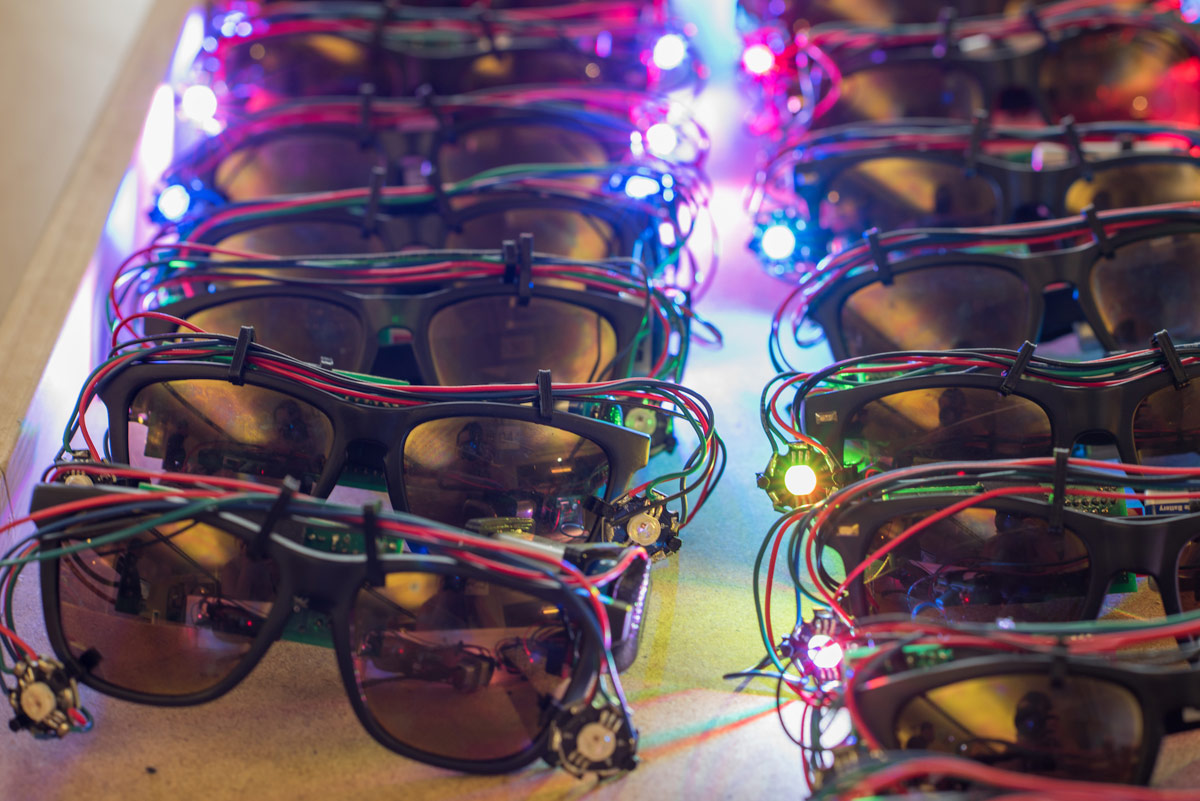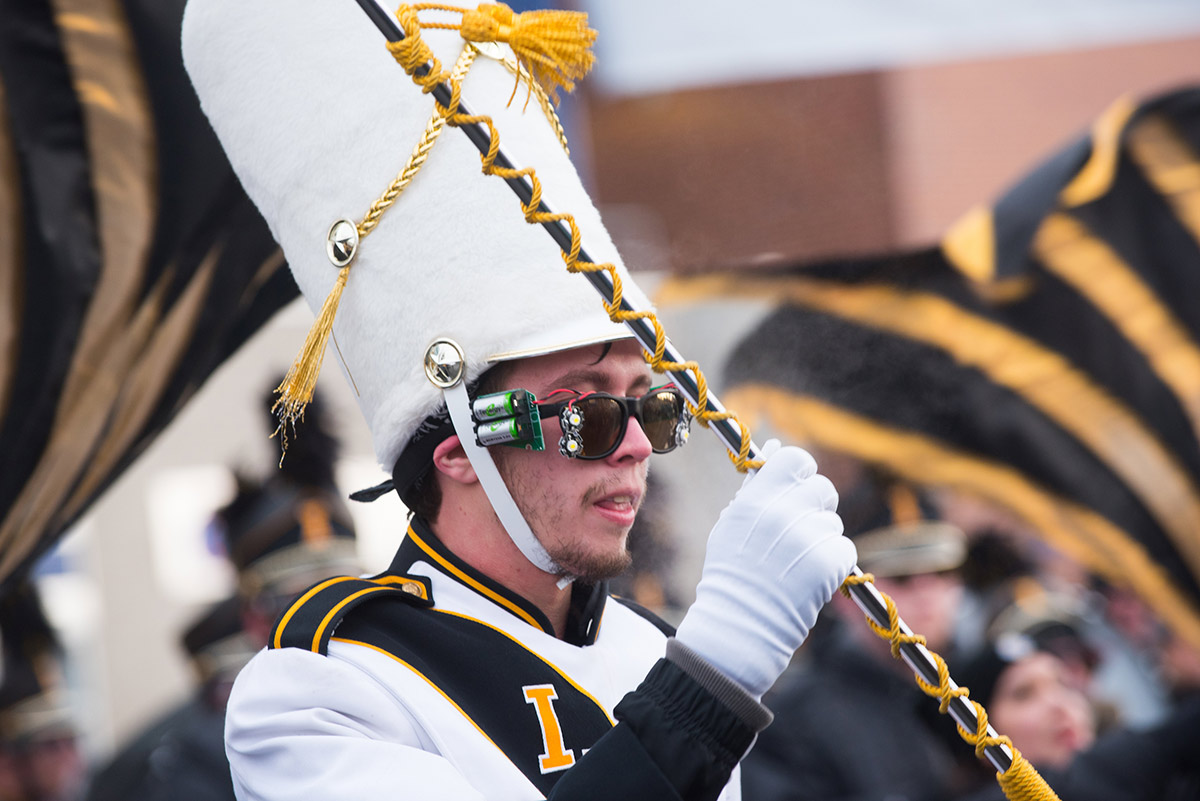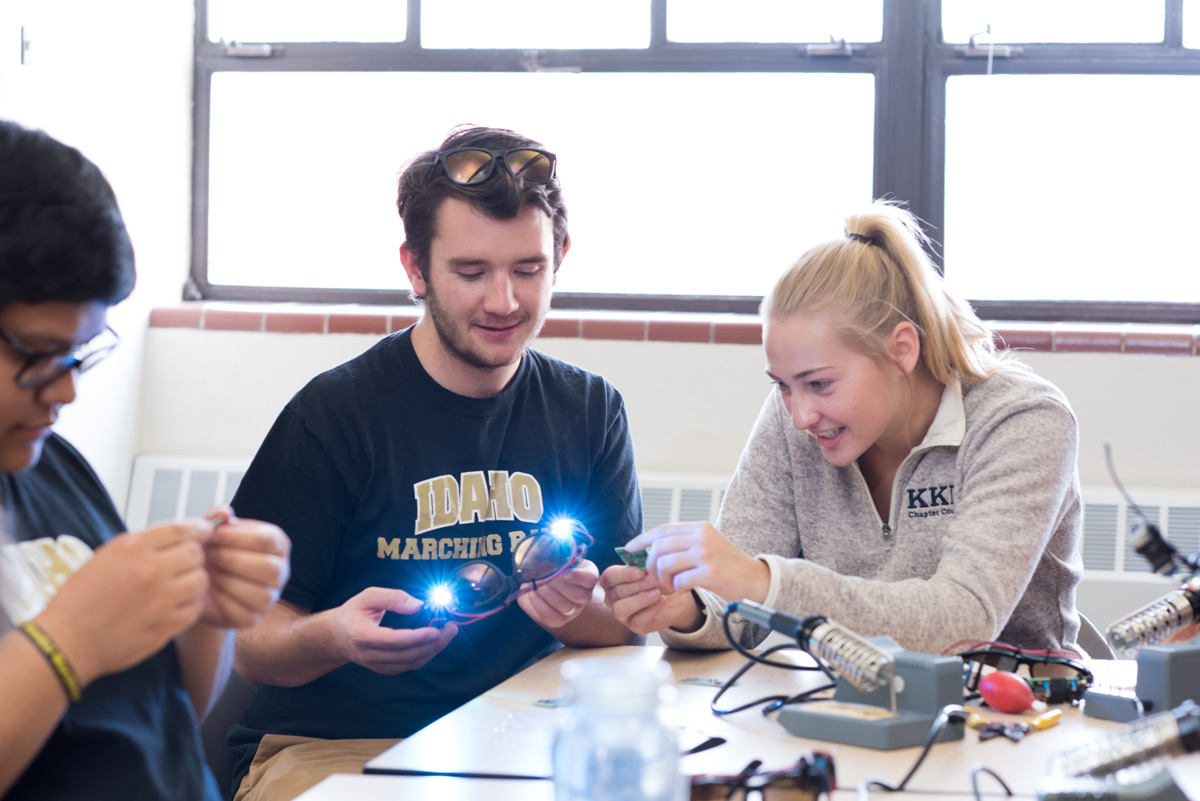High-Tech Sunglasses Entertain Vandal Fans
It’s the start of a classic marching band performance during halftime of a University of Idaho football game: The whistle blows, drums sound, the color guard twirls its flags and horns bellow.
Members of the Vandal Marching Band begin moving into formation. They form the iconic letter ‘I,’ set their sunglasses down on the field, and the props begin flashing in a dizzying display of lights. When the band members go on to form the Vandals script, the ‘I’ is still illuminated in the middle of the turf.
The crowd erupts in cheers at the unanticipated light show, and then sings along as the U of I fight song resonates throughout the Kibbie Dome.
This innovative performance is the product of a partnership between the Department of Computer Science in the College of Engineering and U of I’s marching band — an effort that began in 2012 when Bob Rinker, associate professor of computer science, and Athletic Band Director Spencer Martin met at the behest of student Josh Armstrong.
Armstrong was the president of U of I’s Association of Computing Machinery (ACM) and a member of the marching band. He’d become involved in the project at Theophilus Tower where ACM students use high-powered LEDs and a custom-designed software program to create a light show, backed by popular music, in the windows of U of I’s 11-story dormitory. Rinker, the faculty advisor for ACM, oversees the project.
While Rinker was thinking about additional venues for his light shows, Martin was brainstorming how to spice up the band’s performances. The two combined their ideas with dramatic results.
The project involves state-of-the-art sunglasses, complete with microprocessors and high-powered LED lights, worn by the 230-member marching band. They’re called goofy glasses, but Martin doesn’t think the name accounts for the avant-garde, cutting-edge nature of them.
The design for the glasses’ electronics system and printed circuit board were created by Rinker and students using a computer-aided design program. The boards were fabricated by a manufacturer, and the final product constructed by computer science students and marching band members.
Included on each circuit board is a microprocessor and small wireless module. The microprocessor was programmed by students to receive commands from a central laptop that allows the glasses to be controlled from the sidelines. The laptop runs a student-designed program that involves a transmission protocol with up to 32 separate channels, meaning a performance can consist of 32 different LED colors and patterns at once.


“It’s been really enjoyable to see members of the marching band work in their field of computer science or mechanical engineering and see how they interact in that professional context,” Martin said. After music majors, engineering students are the second highest discipline represented in the marching band — a correlation Rinker attributes to music’s mathematical foundation.
“And it’s fun for the computer science students to have a realistic vehicle to showcase what they’ve done,” Martin said.
The final result of the arts and science collaboration was showcased during halftime of the 2015 homecoming football game, and the reaction was priceless, Martin said.
“When you see it live, it takes your breath away,” he said. “They’re high intensity LEDs, so they’re really bright. And to be honest, marching band isn’t the most glamorous thing you can think of to be involved in. But when the lights went on at the end of our halftime dance, the band got that ovation, and for those 30 seconds, they were rock stars.”
The production cost of the glasses’ electronics systems is financed by a student arts-fee grant. Last year, ACM received $2,000 for the project. The sunglasses themselves were donated by California-based company Knockaround.
What’s next for the computer science and marching band partnership remains a surprise, but those in attendance at the late-season football games can expect absolute innovation.
“What I’ve found is that engineering and the sciences are way more creative and open to new things than maybe the arts are,” Martin said. “To be honest with you, I feel like we’re way too stuck in our ways. You start stretching it, academically, and sometimes that’s not comfortable. You go to engineering and the sciences and you think they’re going to be rigid. But they’re making me realize I need to continue thinking outside the box.”
Rinker does his best to help students find their niche in the field. Ultimately, he wants to foster in students a realization that an inherent interdisciplinary nature exists with computer science.
“Computer scientists, for the most part, don’t just stay in rubber rooms not interacting with anybody,” he said. “They’re solving somebody else’s problem — creating a database, or a webpage, or a new refrigerator that needs a screen in the middle of it. There’s always an application.”

Article by Kate Keenan, College of Art and Architecture.









